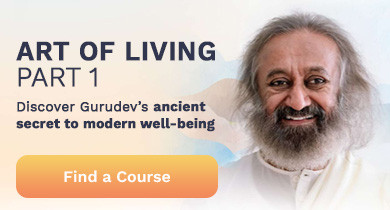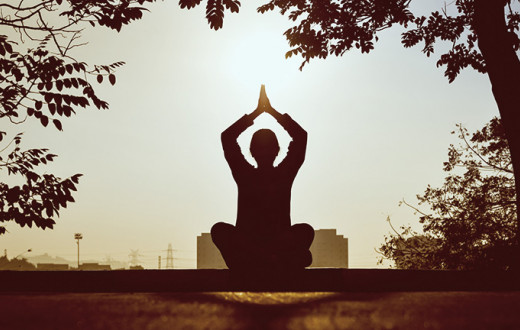
Did you know that habit stacking can help set you up for success with your meditation practice? This secret to building long-lasting habits: habit stacking can be used for everything from managing your inbox to adding any self-care routines to your daily life. Let’s take a look at how habit stacking works and how it can help you be more successful, even with meditation!
Topics covered:
What is habit stacking?

The term habit stacking, first coined by SJ Scott, works by adding a new habit to something you already do regularly. It uses connected behaviors to make new habits easier to remember and practice. Habit stacking can help you achieve any goal, like exercising more or starting a meditation practice. Consistency is key to lasting change, and habit stacking can help you stay consistent.
Habit stacking follows a simple formula: “When I do [current habit], I will do [new habit]”
Our physiology and psychology already favor routines, or we wouldn’t have any habits to begin with. Habit stacking works explicitly by building on existing neural networks in the brain. This, in turn, supports your intentions to add new habits. Let’s look at the science.
The science behind habit stacking
Often, we beat ourselves up when we fail to add a new habit to our daily routine, and guilt sets in, but science is kind of pardoning us. Whenever we learn something new, our brains are busy creating synaptic connections. But if we don’t revisit these connections regularly, our brains engage in synaptic pruning, deleting what is deemed unnecessary.
Since we were little children, our brains have been pruning unused synapses. Peak pruning starts to happen around two years old and again in the teenage years until around the age of twenty. But pruning continues as needed throughout our lives. This is one reason why adding new habits can be so challenging—there simply aren’t enough synapses connected. That is unless you hack your way in through habit stacking!
But this is not all good news. It is also a cautionary tale. The more you repeat bad habits, the more your brain supports them! Hence, bad habits can be very difficult to kick.
Getting started with habit stacking

If you want to help your brain help you, you will need to:
Inventory your current habits to see where to add the desired new habit.
Make sure your new habit is very specific. Being vague won’t cut it. For example, wanting to get more exercise each day is vague, and walking for fifteen minutes after lunch five days a week is specific.
Placement cues are important. To remember your new habit, place a reminder cue near where you practice your existing habit. For example, place your running shoes or workout clothes next to your dog's leash. A sticky note can also be used for a specific cue.
Then, be honest with yourself and list your known pitfalls so you can navigate them.
Be realistic with your goal and how to add it to your daily habits.
Decide on a time limit for implementing your new habit-stacking formula (30 to 40 days is best). After this time period, evaluate whether you want to continue this new behavior or if it is a well-established habit.
Don’t beat yourself up if you need to restart or exceed your initial time commitment. Remember, biochemistry is at play here.
Find healthy ways to reward yourself regularly.
Habit stacking examples

Say you want to get a handle on your overflowing inbox but never seem to get to that task. You do, however, check your email on a need-to basis. If you’re like me, and I think most of us are, you are in and out and onto the next task.
Here’s where you can add even just a few minutes to your regular check-in time to delete as many unnecessary emails as you can in the allotted time. You can also decide to delete a set number of messages every time you check your email. This way, you don’t have to spend a large block of time getting your inbox in order—you just add a small amount of time to your already existing habit.
When I first heard about dry brushing before showering, I was intrigued and excited to add it to my morning routine. But my new natural fiber brush just hung on the back of my bathroom door. Every morning, without fail, I forgot to use it. It wasn’t until I placed the brush on top of the faucet and consciously committed to adding dry brushing that I was able to add this new habit to my existing habit.
Though a little extreme, another example of placement matters when it comes to a specific cue—is putting your yoga mat in front of your coffee pot! That is if you’re a coffee drinker. Imagine smelling a fresh pot of coffee and waiting to reward yourself while you do a few minutes of mindfulness stretches or push-ups. That’s easy peasy habit stacking!
New behaviors or any desired habit are simply actionable ideas if you have an effective strategy. What else could you accomplish by adding new habits to your existing habits?
Habit stacking tips
Be patient, and don’t get discouraged if you slip up. Keep going, and don't give up, your brain will create the connected neurons needed to support your new habit.
Be creative with your placement cues. Once a placement cue starts to work, don’t change it unless the cue stops working.
Try adding a habit stack when you typically have a little extra time in your schedule, like during your lunch break.
Have a due date instead of an open-ended commitment.
Celebrate your successes and use them as motivation to continue building new habits.
What impact does stress have on habit stacking?
Stress is the ultimate proverbial monkey wrench when it comes to good habits, habit stacking, and life in general.
If you’re stressed, you don’t have the energy to deal with life.
If you’re stressed, good habits can subside, and bad habits can take over.
If you’re stressed, your efforts to use habit stacking will likely be sabotaged.
Stress is everyone’s kryptonite!
Meditation and habit stacking

If you struggle to add meditation to your daily routine, you are not alone. Remember, pesky synaptic pruning occurs when you are unable to stick to a new routine. Here are some specific ideas to support your meditation journey in manageable steps.
Create a space specifically for meditating
Wake up a little earlier so you can start your day with a morning meditation
Be realistic about when and how long you can meditate
Place your reminder cues where you will see them
Learn a meditation technique instead of trying to meditate from a book
Set a heartfelt intention or vow (known as sankalpa in spiritual circles)
How to manage stress and strengthen your intentions

One of the best ways to strengthen your intentions is to manage your stress. We all know that when we are feeling stressed out and not like ourselves, it is easy to put off doing the things that can actually make us happier and healthier human beings.
For millions of people, managing stress is easier simply by breathing, as in SKY Breath Meditation. 100+ studies have shown SKY benefits like:
Stress hormone levels reduced by as much as 58%
Reduced addictive behaviors
Greater mental focus
Healthier blood pressure
21% increase in life satisfaction
Enhanced deep sleep
Significant decreases in depression and anxiety
Increased self-esteem and joy
27% increased resilience
Start habit stacking with this winning formula for improving your success! You can learn SKY for yourself by registering for the Art of Living Part 1 course today.
Related articles
Cortisol: The Good, The Bad, And The Ugly
Morning Meditation to Start Your Day the Right Way
A Conversation Between Gurudev and The Playbook's David Meltzer
The Nose Knows: BioHacking Energy Flow Through the Nostrils
Reduce the Risk of Burnout with Meditation at Work
How to Reduce Screentime Before Bed for Quality Sleep
Quiet Quitting: Finding Deeper Meaning At Work and In Life
Create Your New Meditation Space and Discover Your Piece of Peace
Manifesting the Life You Want With Altars of Power and Grace






























